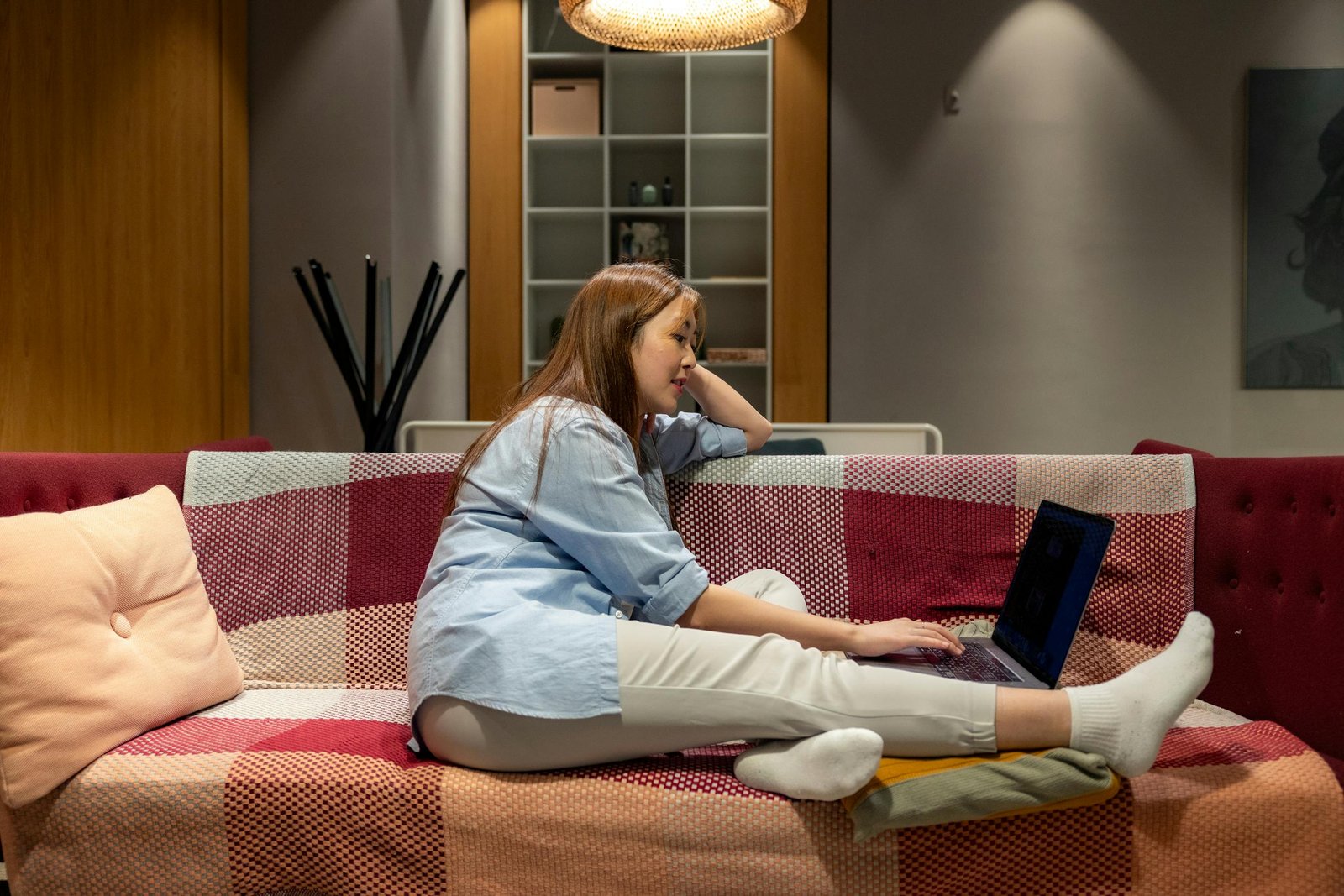Introduction to WFH Success
The concept of working from home (WFH) has gained significant traction in recent years. Catalyzed by global events and advancements in technology, more professionals are transitioning to remote work environments. This shift has brought about a paradigm change in how businesses operate and how employees manage their daily tasks. The flexibility of working from home offers numerous benefits, such as reduced commute times, better work-life balance, and the opportunity to create a personalized workspace.
However, WFH is not without its challenges. Distractions at home, feelings of isolation, and difficulties in maintaining a clear boundary between work and personal life can impede productivity. The key to overcoming these challenges lies in creating a productive home workspace. An environment that promotes focus and efficiency is crucial for achieving long-term success while working remotely.
As we delve into the various strategies to enhance your home workspace, it becomes evident that the physical setup, mental well-being, and effective time management all play pivotal roles. By addressing these aspects, you can optimize your work-from-home experience, ensuring that you remain productive and satisfied in your professional endeavors.
Setting the stage for WFH success involves understanding the unique dynamics of remote work. It’s about fostering a space that not only meets your professional needs but also supports your overall well-being. As you navigate through the following sections, you will discover practical tips and insights that will help you create the best productive home workspace, tailored to your specific requirements.
Designate a Specific Workspace
In the era of remote work, having a designated workspace is crucial to achieving a productive and balanced work-from-home (WFH) experience. A specific workspace helps delineate the boundary between professional duties and personal life, allowing individuals to mentally switch between work mode and relaxation. This separation is essential for both mental well-being and work efficiency, as it prevents the overlap of professional tasks with personal time.
Choosing the right location for your home workspace is the first step. Ideally, select a quiet area with minimal distractions. This could be a spare room, a corner in your living room, or even a section of your bedroom. The key is to ensure that this space is solely dedicated to work activities. A well-lit area with adequate natural light can enhance your mood and energy levels, contributing to better focus and productivity. If natural light is not an option, invest in good quality artificial lighting that mimics daylight.
Once the location is determined, setting up your workspace effectively is paramount. Start with a comfortable chair and a desk at the right height to promote good posture and avoid physical strain. Organize your workspace with essential tools and supplies within easy reach. This includes your computer, office supplies, and any other equipment you use regularly. Keeping your workspace tidy and clutter-free can also have a positive impact on your concentration and efficiency.
Personalizing your workspace can make it more inviting and conducive to productivity. Consider adding elements that inspire you, such as artwork, plants, or motivational quotes. However, be cautious not to overdo it, as excessive décor can become a source of distraction. Additionally, using noise-canceling headphones or background music can help maintain focus, especially if you share your living space with others.
By designating a specific workspace, you create an environment that supports a productive WFH routine. This dedicated area not only enhances your ability to focus but also helps maintain a healthy work-life balance, ultimately leading to a more successful remote work experience.
Invest in Ergonomic Furniture
Creating an effective home workspace starts with investing in ergonomic furniture. Proper ergonomic furniture is crucial not only for comfort but also for preventing common health issues such as back pain, wrist strain, and other musculoskeletal disorders. When working from home, it is easy to overlook the importance of a well-designed workspace, but the long-term benefits are substantial.
An ergonomic chair is one of the most important pieces of furniture you can invest in. Look for chairs that offer adjustable height, lumbar support, and a seat that tilts. These features ensure that you can maintain a neutral spine position, reducing the risk of back pain. The chair should also have armrests to support your arms and reduce strain on your shoulders and wrists.
Desks are another critical component of an ergonomic setup. Sit-stand desks are gaining popularity because they allow you to switch between sitting and standing positions throughout the day. This variability can help reduce the risk of sedentary-related health issues. If a sit-stand desk is not an option, make sure your desk height allows your elbows to be at a 90-degree angle when typing. Adding ergonomic accessories, such as keyboard trays and monitor stands, can further enhance your setup. A keyboard tray can help position your keyboard and mouse at a comfortable height, while a monitor stand ensures your screen is at eye level, reducing neck strain.
Additionally, consider the placement of your peripherals. Your monitor should be an arm’s length away, with the top of the screen at or slightly below eye level. This setup helps reduce eye strain and encourages good posture. Footrests can also be beneficial, especially if your feet don’t comfortably reach the floor.
Incorporating ergonomic furniture into your home workspace is an investment in your health and productivity. By taking these steps, you can create a comfortable, efficient, and sustainable work environment that supports your well-being and work performance.
Optimize Lighting and Reduce Glare
Proper lighting in your home workspace is essential for reducing eye strain and enhancing productivity. The right balance of natural and artificial light can create an environment that is both comfortable and conducive to efficient work. Start by maximizing the natural light available in your workspace. Position your desk near a window to take advantage of daylight, which can significantly enhance mood and focus.
However, be mindful of direct sunlight, as it can cause screen glare and discomfort. Use sheer curtains or blinds to diffuse the light, ensuring that your workspace remains well-lit without harsh shadows. In situations where natural light is insufficient, selecting the right artificial lighting becomes crucial.
Choose LED bulbs for your desk lamp or overhead light, as they offer a bright, consistent light that closely mimics daylight. Opt for adjustable lamps so you can direct light exactly where you need it, minimizing shadows and reducing glare on your computer screen. Additionally, consider the color temperature of your bulbs; a cooler, white light is generally more effective for work environments than a warm, yellow light.
Arranging your workspace to minimize screen glare is another important aspect. Position your computer screen perpendicular to windows to prevent reflections and adjust your screen’s brightness settings to match the ambient light in the room. Anti-glare screen protectors can also be a valuable investment, reducing the strain on your eyes during prolonged periods of screen time.
Incorporating these lighting strategies into your home workspace setup not only helps reduce eye strain but also boosts your overall productivity. By ensuring that your environment is well-lit and free from glare, you create a more comfortable and efficient space for your work-from-home needs.
Minimize Distractions
Working from home presents unique challenges, one of the most significant being distractions. To foster a productive home workspace, it is crucial to minimize these disturbances effectively. Establishing clear boundaries with family members or housemates is a fundamental strategy. Communicate your work hours and the importance of maintaining a quiet environment during those times. This mutual understanding helps in creating a professional atmosphere at home.
Another effective measure is to invest in noise-canceling headphones. This tool can significantly reduce background noise, allowing for better concentration on work tasks. Whether it’s the sound of household activity or outdoor noise, noise-canceling headphones can help maintain focus, thereby enhancing overall productivity.
Creating a work schedule that aligns with your household’s routine is equally important. Analyze the daily patterns of your household to identify the quietest periods and plan your most demanding tasks during these times. This synchronization ensures that your work hours are more productive and less interrupted by household activities.
Additionally, designate a specific workspace within your home that is dedicated solely to work activities. This physical separation between work and leisure spaces can mentally signal a change in roles, helping you to transition into a work mindset more seamlessly. Ensure that this workspace is organized and free from unnecessary distractions, such as household clutter or entertainment devices.
Finally, practicing time management techniques can also help minimize distractions. Techniques such as the Pomodoro Technique, where you work for a set period and then take a short break, can improve focus and reduce the likelihood of getting sidetracked. By combining clear communication, the right tools, strategic scheduling, and effective workspace organization, minimizing distractions becomes a manageable task, leading to a more productive home workspace.
Organize Your Workspace
Maintaining an organized workspace is paramount for enhancing productivity and focus while working from home. A clutter-free environment minimizes distractions and fosters a conducive atmosphere for efficient work. To start, decluttering is essential. Remove unnecessary items from your desk and surrounding area. This not only creates physical space but also clears your mind, allowing you to concentrate better on your tasks.
Effective storage solutions are key to sustaining an orderly workspace. Utilize drawers, shelves, and organizers to keep essential items within reach yet out of sight. Labeling storage boxes and files ensures that you can quickly locate documents and supplies, reducing time wasted searching for them. Consider incorporating desk organizers for pens, notepads, and other frequently used items to keep them neatly arranged.
Maintaining an organized desk is equally crucial. At the end of each workday, take a few minutes to tidy up. This practice not only keeps your workspace clean but also sets a positive tone for the next day. Implement a filing system for paperwork and digital documents to avoid piles of clutter and ensure that everything has its designated place.
Additionally, ergonomics play a significant role in workspace organization. Arrange your desk and computer setup in a way that promotes good posture and minimizes strain. An ergonomic chair, a well-positioned monitor, and a clutter-free desk contribute to a comfortable and efficient work environment.
Incorporating these strategies into your daily routine will help you maintain a well-organized workspace. This, in turn, enhances your ability to focus, stay productive, and achieve your work-from-home goals. By prioritizing organization, you create a space that supports your professional endeavors and overall well-being.
Working from home offers a unique set of challenges, particularly when it comes to maintaining a healthy balance between productivity and well-being. One crucial strategy is to incorporate regular breaks and physical activity into your daily routine. Frequent breaks are essential for maintaining mental clarity and preventing burnout. They provide an opportunity to step away from your desk, relax your mind, and return to work with renewed focus.
Benefits of Regular Breaks
Taking regular breaks can significantly enhance your productivity. Short, intentional pauses allow your mind to rest and rejuvenate, improving overall concentration and reducing the likelihood of errors. One effective method to manage work intervals is the Pomodoro Technique, which involves working for 25-minute segments followed by a five-minute break. After four such cycles, take a longer break of 15-30 minutes. This technique not only helps maintain focus but also encourages a rhythm that naturally integrates rest.
Incorporating Physical Activity
Physical activity is equally important when working from home. Sedentary behavior can lead to various health issues, including back pain and decreased cardiovascular health. Integrating short exercises and stretching routines into your breaks can counteract these negative effects. Simple activities such as walking around your home, performing desk stretches, or engaging in a quick yoga session can make a significant difference. Even a five-minute stretch or a brief walk can boost your energy levels and improve your mood.
Ideas for Physical Activity
Here are a few practical ideas to incorporate physical activity into your workday:
- Set a timer to remind yourself to stand and stretch every hour.
- Use a standing desk or a balance ball chair to encourage movement.
- Take short walks during your breaks, either inside your home or outside if possible.
- Follow along with online exercise videos tailored for short, office-friendly workouts.
- Practice desk yoga or chair exercises designed for small spaces.
By incorporating these practices into your work-from-home routine, you can maintain your health, enhance your productivity, and create a more balanced and enjoyable workday.
Creating an inviting and motivating workspace is essential for maintaining productivity while working from home. Personalizing your workspace can transform an ordinary area into an environment that fosters creativity and positive energy. Simple touches, such as photos, plants, and artwork, can significantly enhance your work atmosphere.
Add Personal Photos
Incorporating personal photos into your workspace can have a profound impact on your mood and motivation. Displaying pictures of loved ones, memorable vacations, or special moments can serve as a reminder of what you cherish and why you work hard. These visual cues can provide an emotional uplift, especially during stressful times, making your workspace feel more personal and comforting.
Incorporate Plants
Introducing plants to your workspace is another effective way to personalize and invigorate your environment. Plants not only add a touch of nature to your desk but also improve air quality and reduce stress. Options like succulents, spider plants, or even a small potted herb can bring a sense of freshness and life to your workspace. The presence of greenery has been scientifically proven to enhance concentration and boost overall well-being.
Display Artwork
Artwork can play a crucial role in personalizing your workspace. Whether it’s a piece of art that you created, a print that inspires you, or a motivational quote framed on your wall, artwork can stimulate your creativity and provide a mental break throughout your day. Choose pieces that resonate with you and reflect your personality and interests. This will make your workspace not only more aesthetically pleasing but also more engaging and motivating.
By personalizing your workspace with photos, plants, and artwork, you create an environment that is both inviting and motivating. These personal touches can significantly influence your morale and creativity, making your work-from-home experience more enjoyable and productive.
Utilize Technology and Tools
Embracing technology is pivotal for maximizing productivity in a work-from-home (WFH) environment. The right tools can streamline your workflow, facilitate communication, and ensure you stay on top of your tasks. One of the first steps is to invest in robust project management software such as Trello, Asana, or Monday.com. These platforms help in organizing tasks, setting deadlines, and tracking project progress, enabling a structured approach to work. They also offer collaborative features, making it easier to coordinate with team members.
Effective communication is another cornerstone of successful remote work. Tools like Slack, Microsoft Teams, and Zoom foster real-time interaction, facilitating both casual conversations and formal meetings. These platforms often come with integrated features such as file sharing, video conferencing, and screen sharing, which are essential for maintaining a seamless flow of information and collaboration.
Time management is crucial when working from home, where distractions are plentiful. Time tracking software like Toggl, Harvest, or Clockify can be instrumental in managing your schedule efficiently. These tools help in monitoring how much time you spend on various tasks, allowing you to identify areas where you can improve productivity. They also provide insights into your working patterns, enabling you to optimize your time better.
No technology setup is complete without a stable internet connection. A reliable and fast internet connection ensures uninterrupted access to all your digital tools and resources. Regularly updating your tech setup, including software and hardware, is equally important. Outdated technology can hinder your productivity and expose you to security risks. Therefore, ensure your devices are equipped with the latest software updates and security patches.
In essence, leveraging the right technology and tools can significantly enhance your productivity while working from home. By investing in project management software, communication platforms, and time tracking tools, and by maintaining a stable internet connection, you can create a highly productive home workspace.





